Bursa Ulu Mosque was built on a large area where Orhan Gazi Park is located, during the time of Yıldırım Bayezid, between 1396-1400. It is the first of the multi-domed monumental structures among the Ottoman mosques. Ulu Mosque has twenty domes sitting on twelve large four-cornered pillars. After Yıldırım Bayezid’s 1396 victory in Niğbolu, the construction of the Great Mosque was started. After the construction of the mosque was completed, Somuncu Baba led the first prayer to the congregation, including Yıldırım Bayezid, Molla Fenari and Emir Sultan. The first imam of the Great Mosque is Süleyman Çelebi, the author of Mevlid.
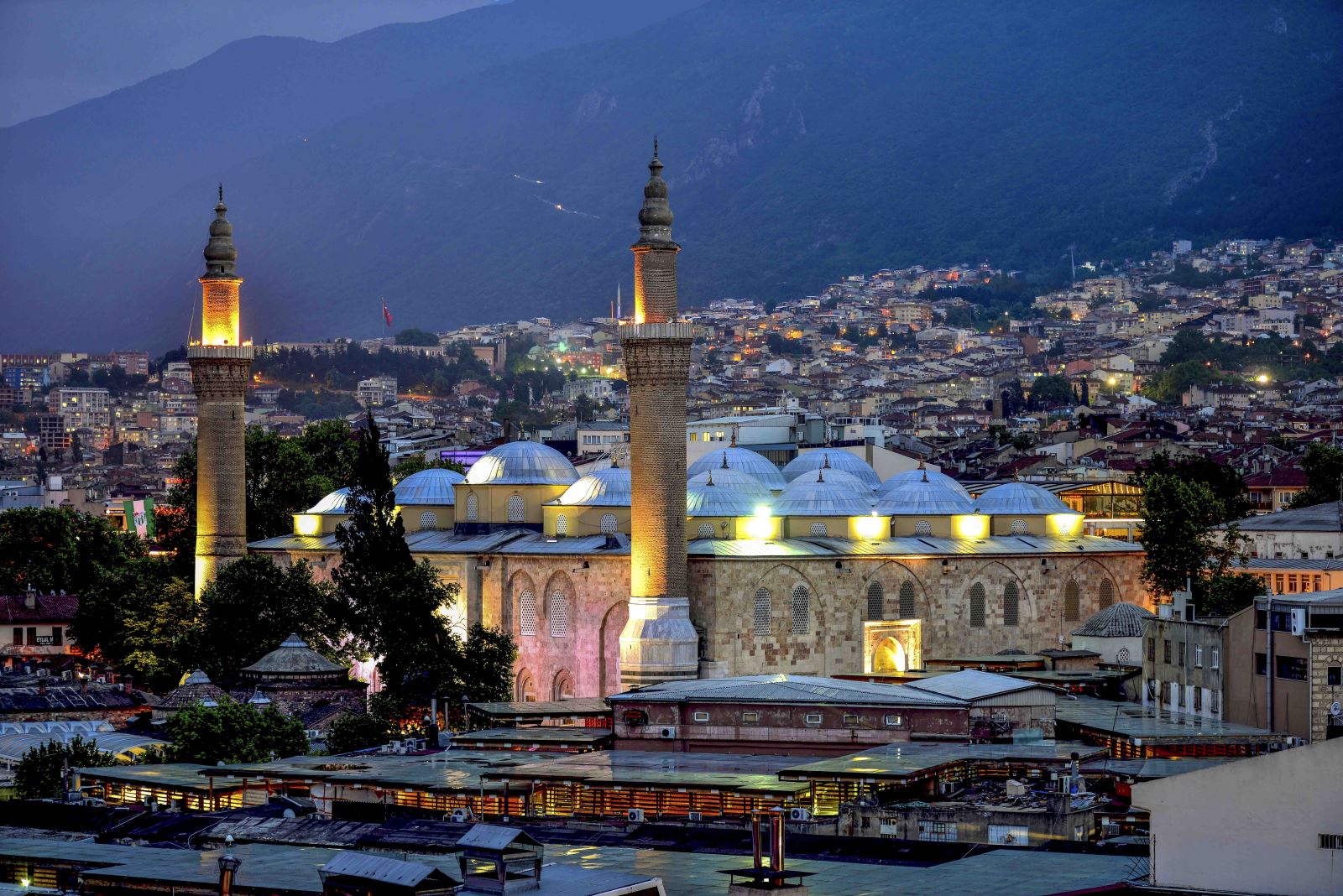
Bursa Ulu Mosque – Bursa
The fountain under the dome in the mosque has a hexagonal pool and a fountain with three bowls. The inscription on the pulpit gate shows the mosque’s end date as 802 (1399-1400). The western minaret of the mosque, which has two minarets, was built by Yıldırım Bayezid, and the eastern minaret was built during the reign of Çelebi Sultan Mehmed.
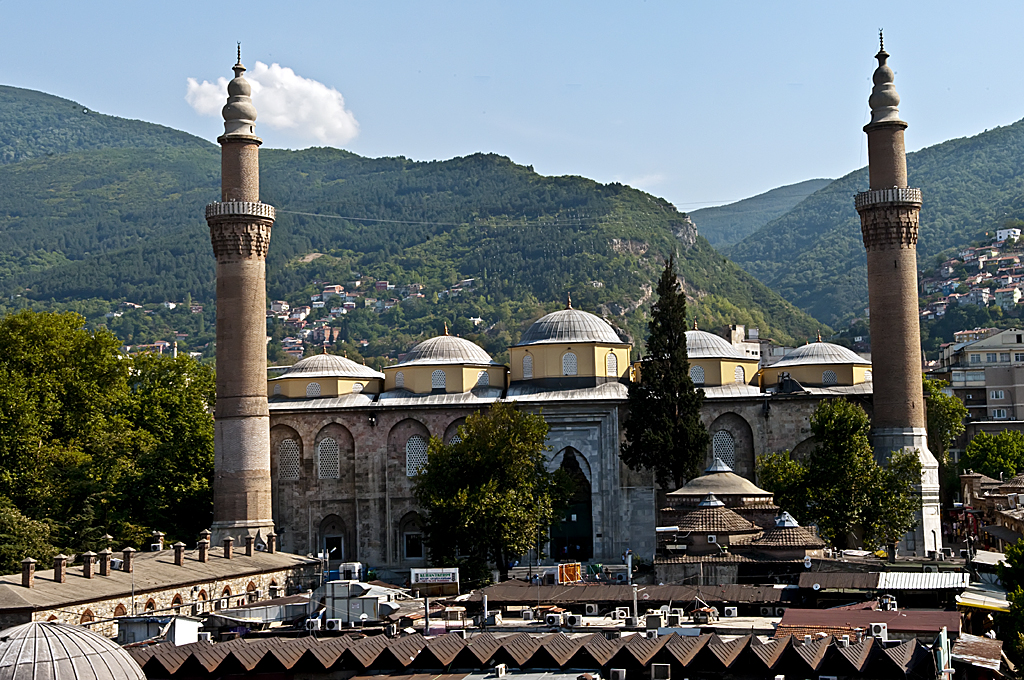
Bursa Ulu Mosque – Bursa
The mosque, which was destroyed during the Timurid invasion, was repaired in these years, and the biggest repair was made after the 1855 earthquake.
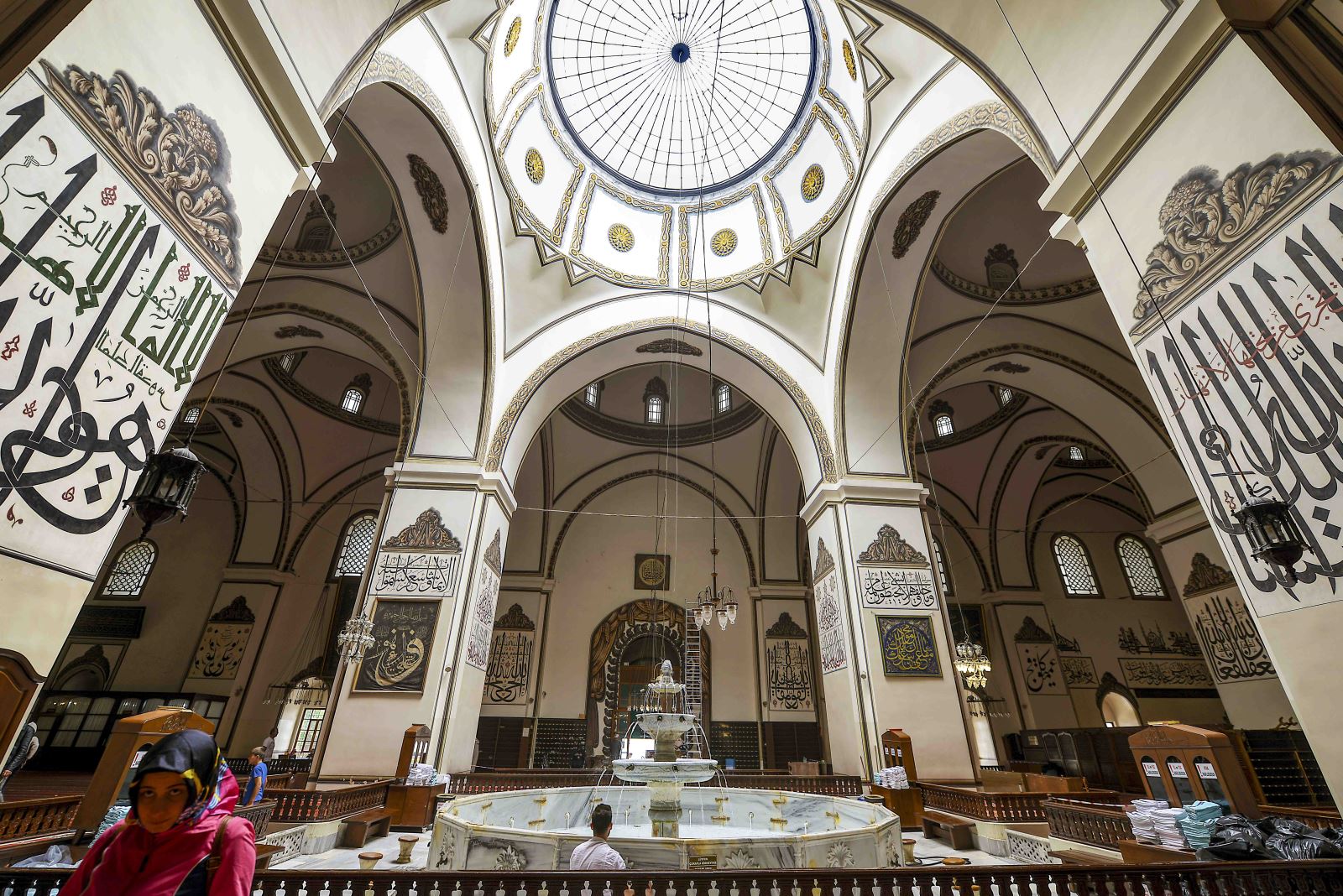
Bursa Ulu Mosque – Bursa
Ulu Mosque, which is a unique structure in Ottoman architecture in terms of its construction style, is a rectangular planned structure measuring 55 x 69 meters. Its total interior area is 3,165 square meters. It is the largest of the Great Mosques in Turkey. The top of the dome in the middle of the mosque, which is covered with twenty domes on twelve pillars, is open. In recent years, this opening has been covered with glass. Its walls were completely built with smooth cut stone.
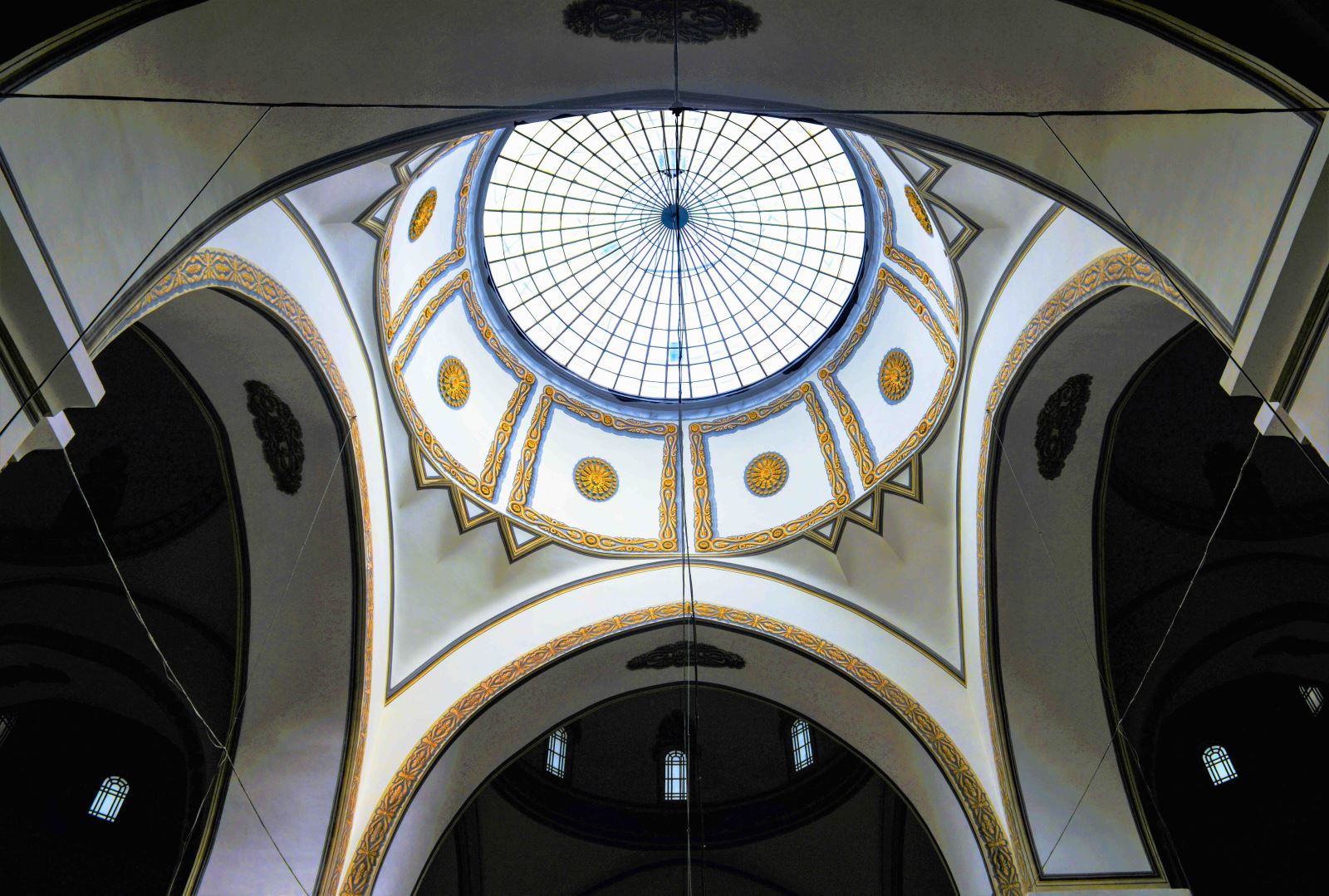
Bursa Ulu Mosque – Bursa
The black cover hung on a high place on the east door side next to the Imam’s room is the cover of the Kaaba door. Yavuz Sultan Selim, who became the caliph after the Egyptian Campaign, changed the cover of the Kaaba with a new cover sent from Istanbul. Yavuz brought the old cover to Bursa and gave it to the Ulu Mosque as a gift and carried it with his own hands and hung it. The veil, with verses embroidered on it with pure gold thread, remained black for centuries; however, the verses can be seen under bright light today, as the embroideries have been spilled upon the humidity of the mosque.
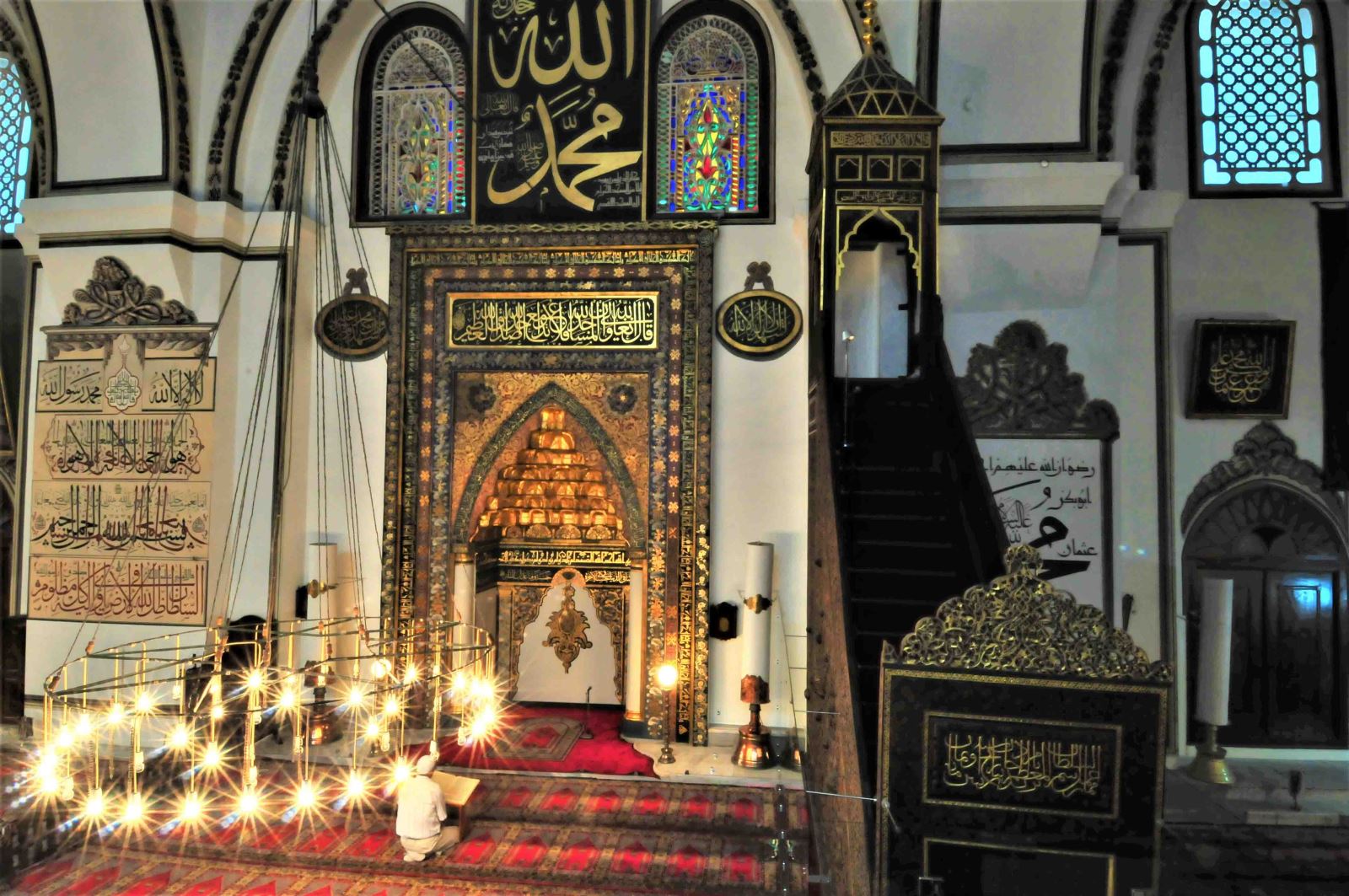
Bursa Ulu Mosque – Bursa
The rich-looking altar, with its stalactites arranged in eight rows bearing the traces of the 14th century and hourglass-shaped colonnades on the outer corners, was completed in 1751. The name of the master Mehmet, who made the mihrab, is written on the left side of the mihrab. Made of walnut wood and painted in black, the minbar is a rare work of art. The 0.40 x 1 meter inscription on the door states that the mosque was completed in 1400 by the order of Yıldırım Bayezid. The minbar was built in Manisa by Hacı Mehmet b. It is the work of Abdulaziz al-Dukki. The text giving this information was written vertically on the right handrail of the pulpit. The work, which has the effects of Kündekari art, was created by interlacing technique by carving geometrically without using glue and nails. It has some projections on its eastern face, and these are said to be the solar system and planets. The embroideries and the minbar are among the important works of the transition to the Ottoman architectural style.
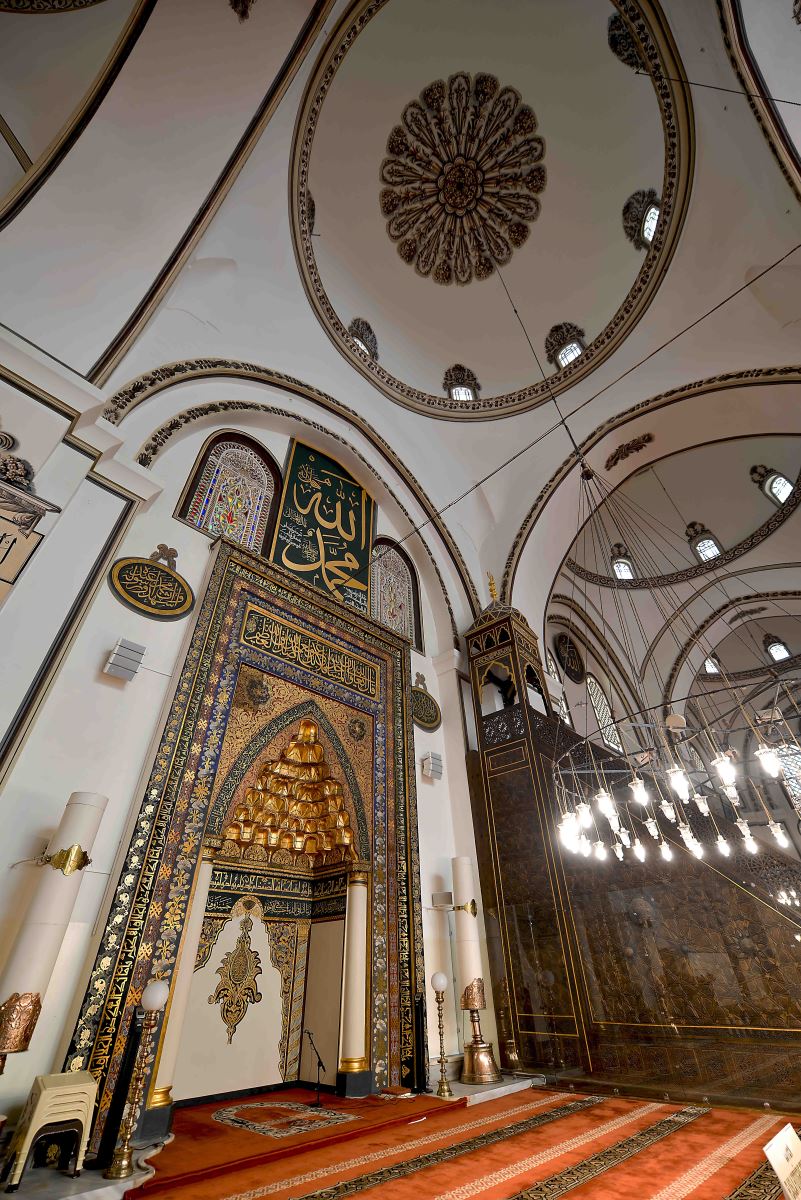
Bursa Ulu Mosque – Bursa
The high and simple muezzin mahfili sitting on eight elegant columns was built in 1549. The round stone lectern carved from a single piece of marble placed on the foot opposite the mahfil was built in 1815. The mosque has three gates in the east, west and north directions. Of these doors, the ones on the north and west directions are new, and the door wings on the east were built in the same period as the mosque. Wooden wings are made of walnut wood. Although some parts are damaged, it has survived to the present day. Wings decorated with carved and interlaced geometric motifs, in accordance with the pulpit of the mosque, have the characteristic feature of the 16th century. The view of the crown gate opening to the courtyard in the north increases the majesty of the work one more time. Its hood consists of stalactites arranged in eleven rows, and a wide and simple molding surrounds its bright niche.
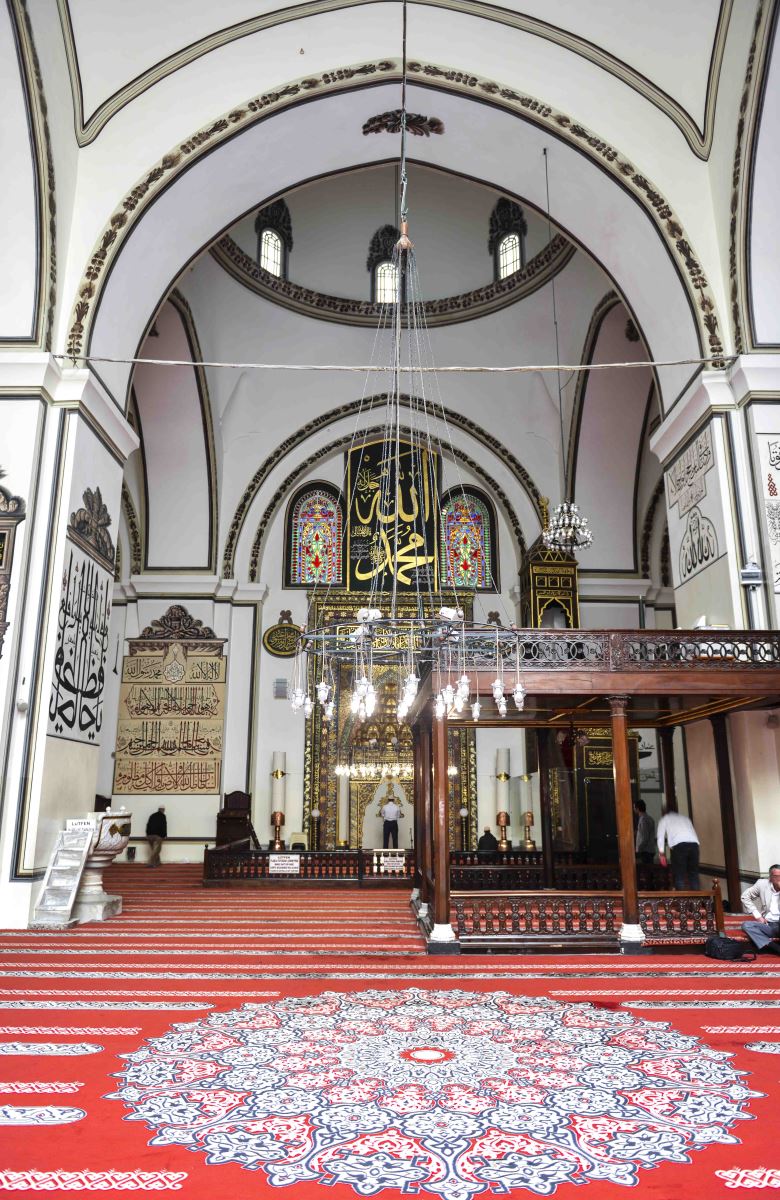
Bursa Ulu Mosque – Bursa
The windows of the mosque are different in terms of shape and size on each facade, and their jambs are plain marble. There are small openings called “breathers” in the window pediments. A lower row of windows in the south wall were later closed. Top row windows are not on the same axis as lower row windows. Wall thicknesses are different from each other. The east is 2.80 meters, the west is 3.10 meters, the north is 2.40 meters and the south wall is 2.20 meters thick.
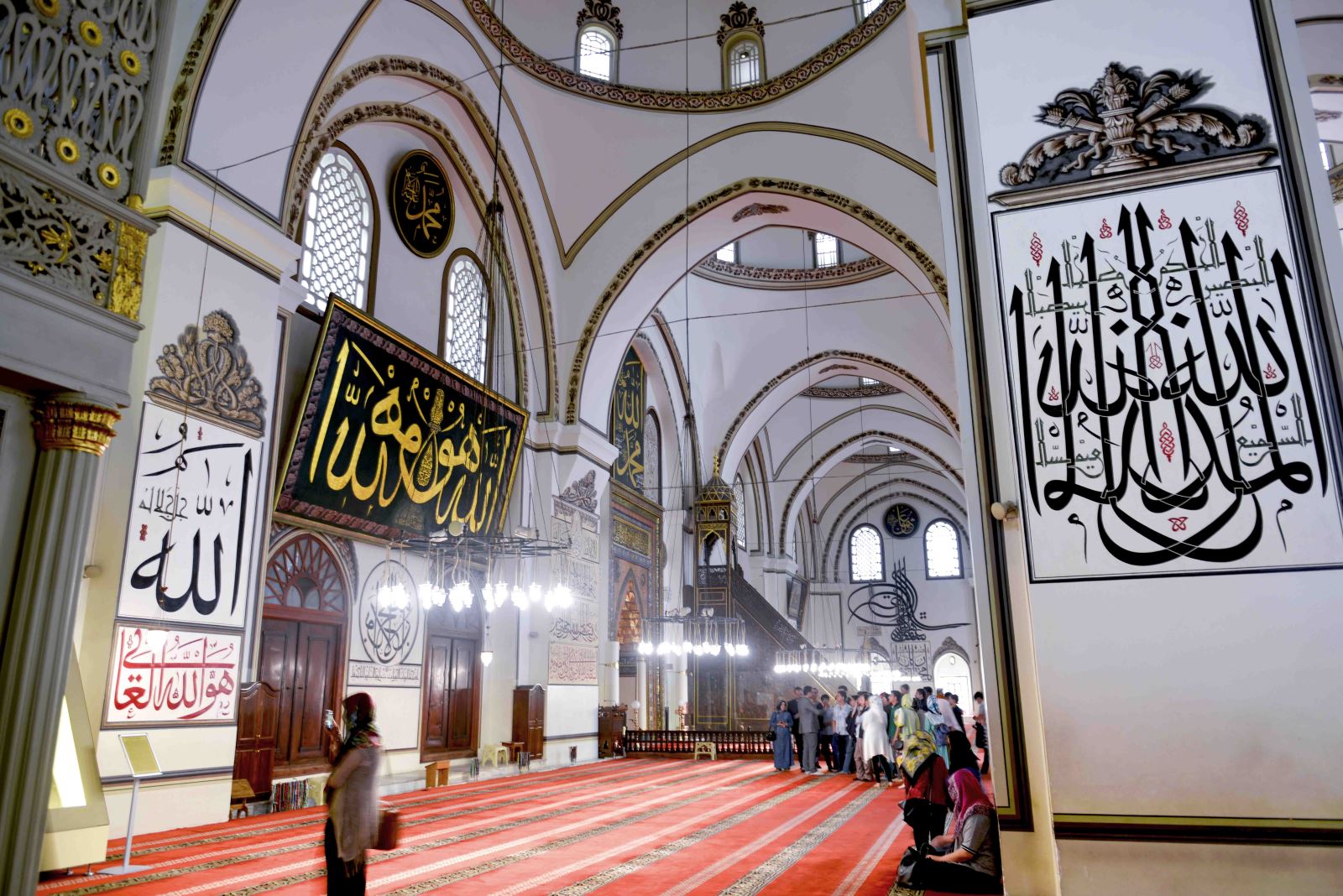
Bursa Ulu Mosque – Bursa
The calligrapher’s signature is under most of the plates adorning the inner walls of the Ulu Mosque. The deficiencies of the majority of them were corrected or rewritten by Calligrapher Şefik Bey. Inside the mosque, there are 192 inscriptions in 87 plaques written on the wall by 41 different calligraphers with 13 different fonts. There are also very valuable clocks, candlesticks and Qurans.
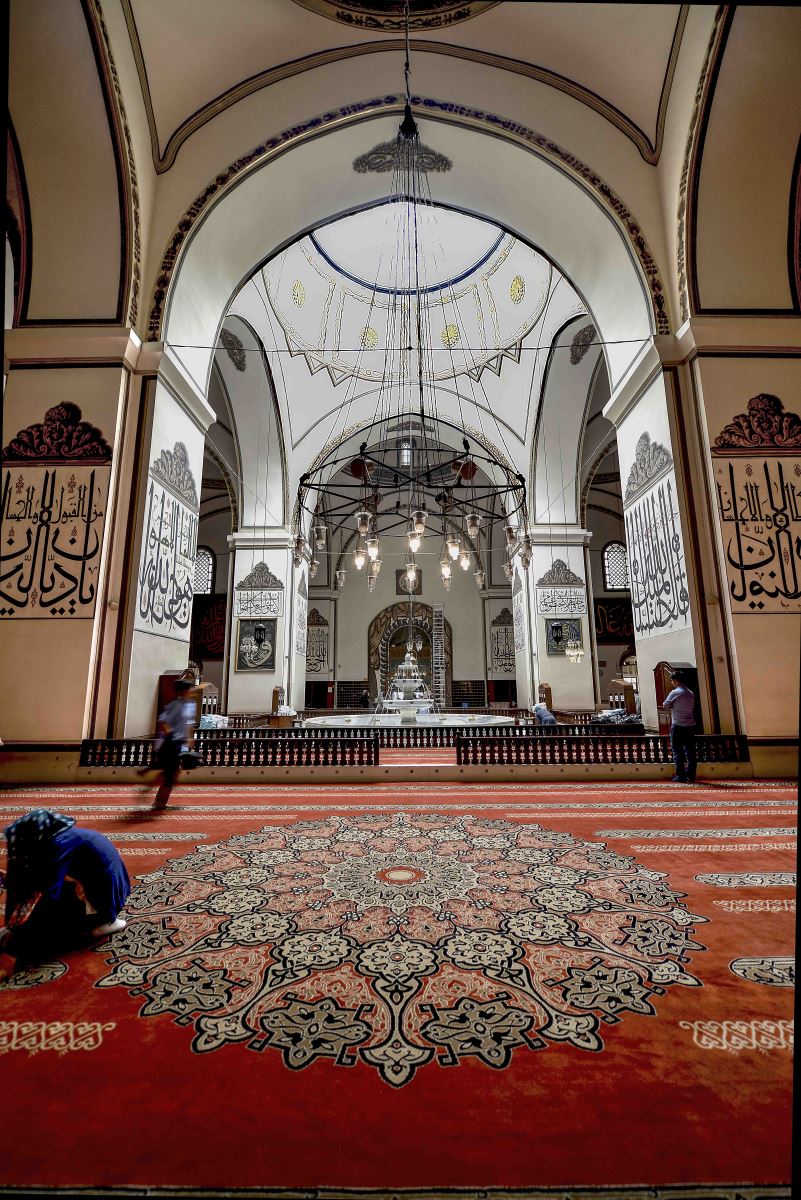
Bursa Ulu Mosque – Bursa
There are three fountains in the courtyard of the mosque. It is estimated that the fountain inside the mosque was designed in the first years of the Ottoman Empire, due to the Turks’ interest in water.
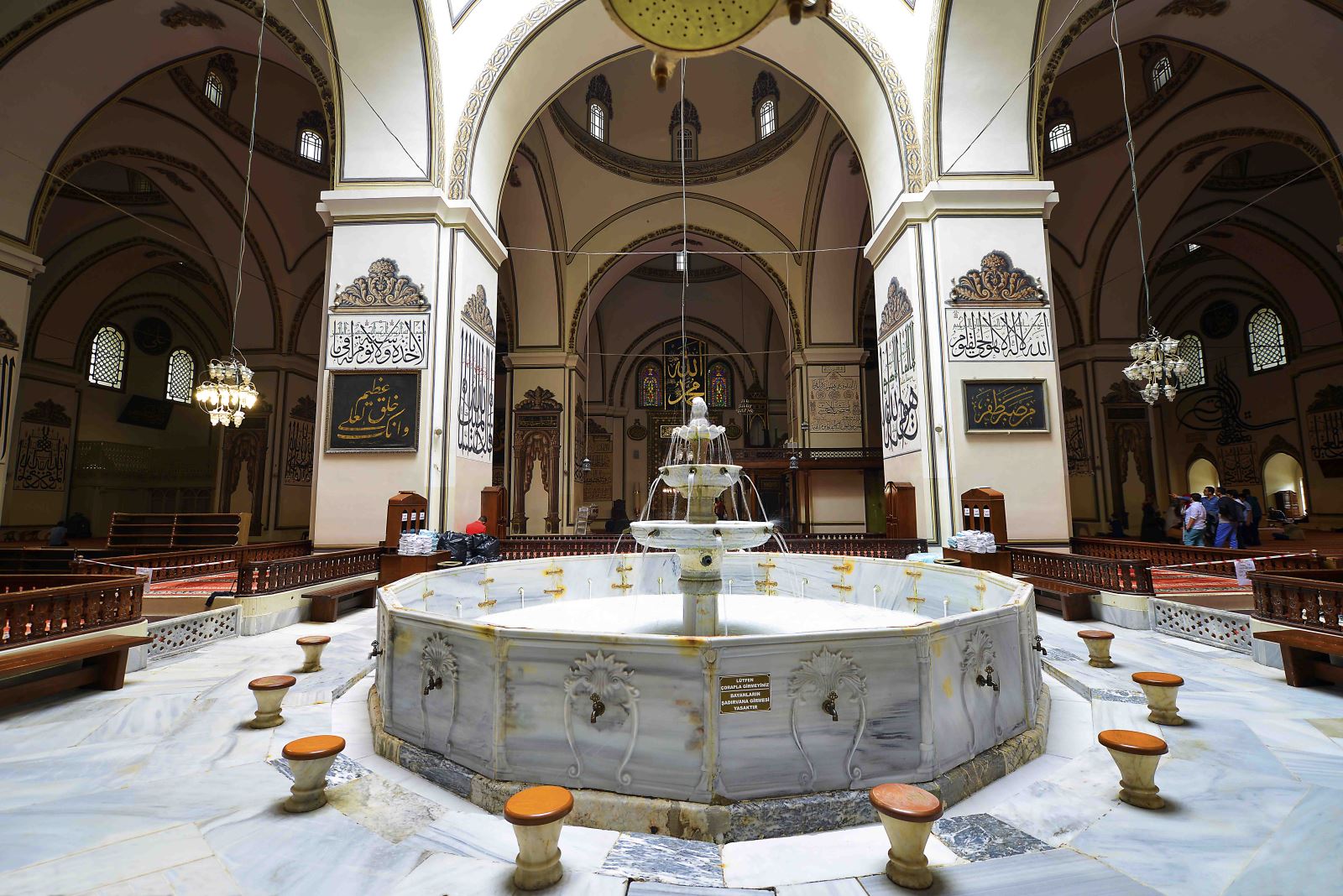
Bursa Ulu Mosque – Bursa
The sixteen-cornered pool is filled with water poured from the three-bowl fountain in eight branches and distributed to the taps. The axis of the mihrab and the axis of all three doors meet at the center of the fountain.
Source: Bursa Governorship, Bursa Provincial Culture and Tourism Directorate
